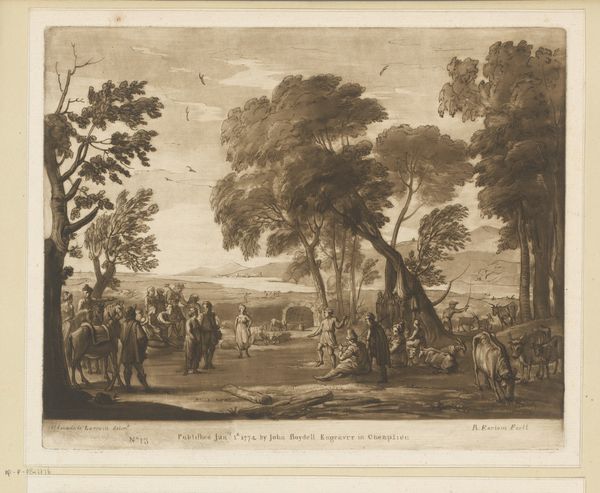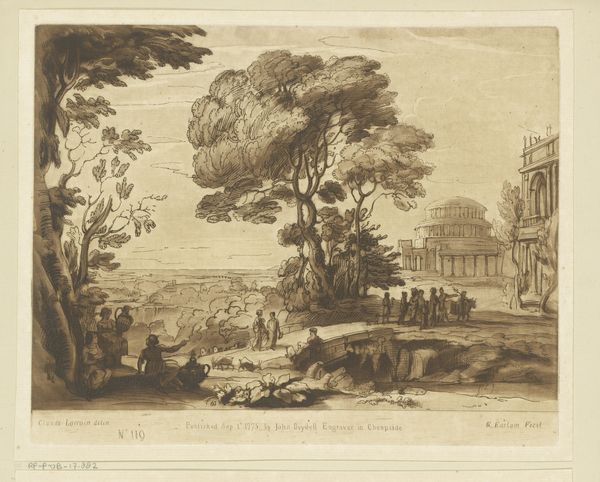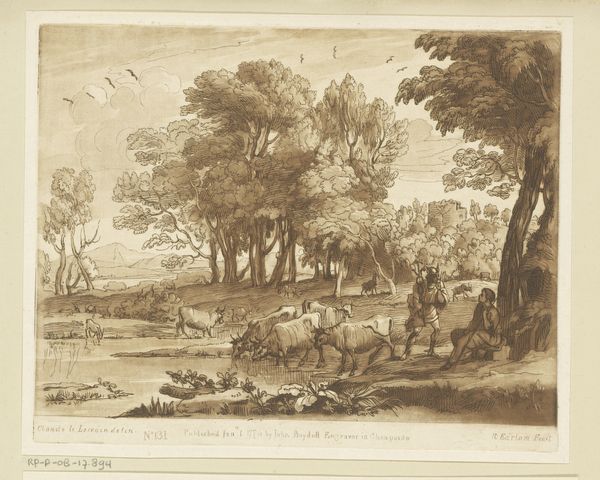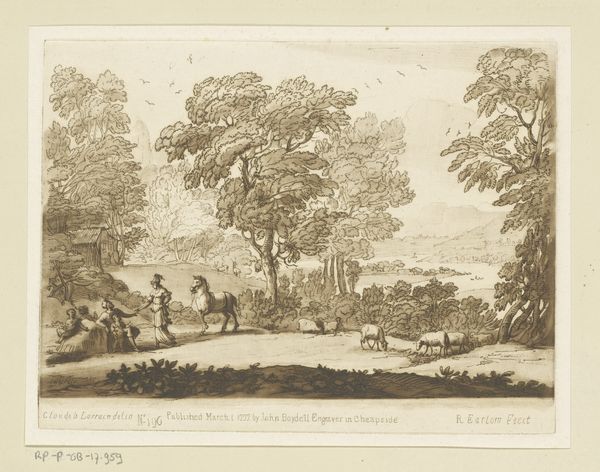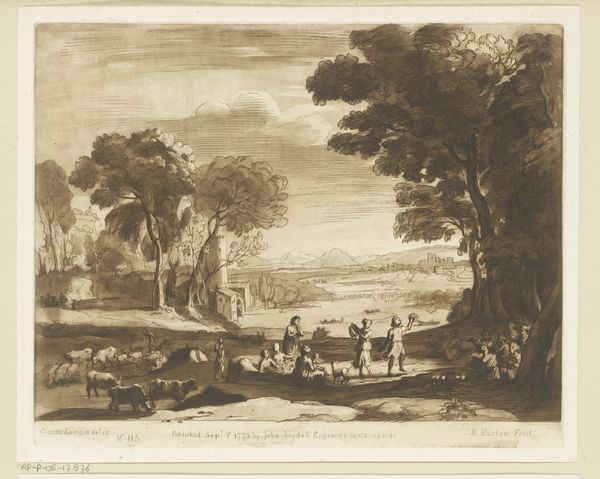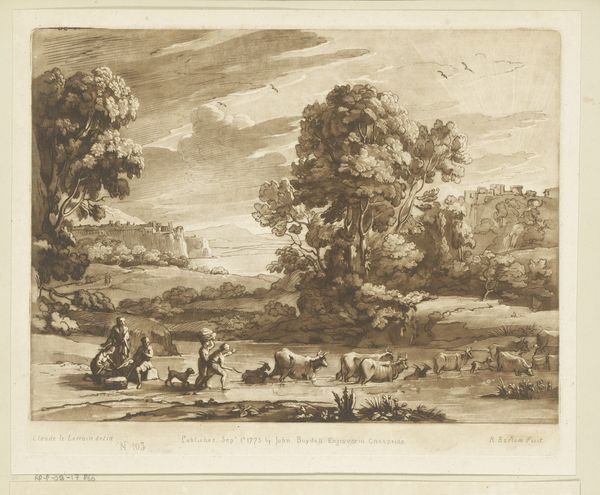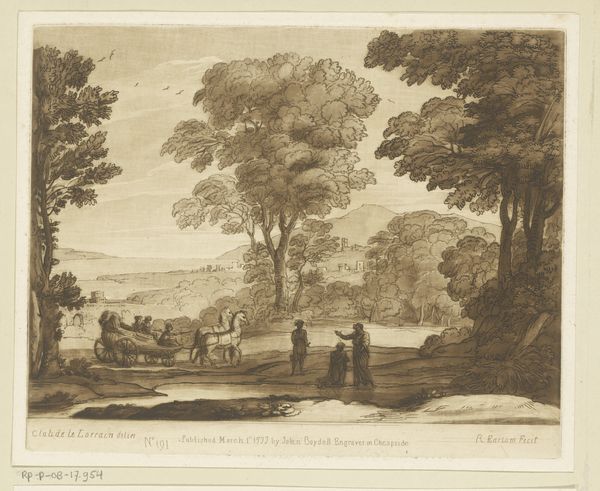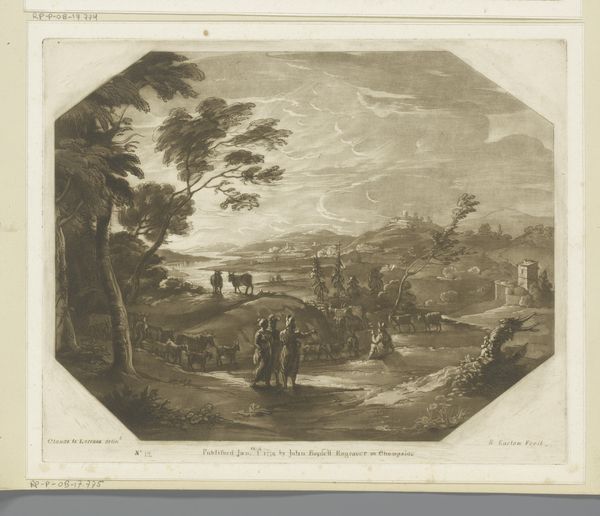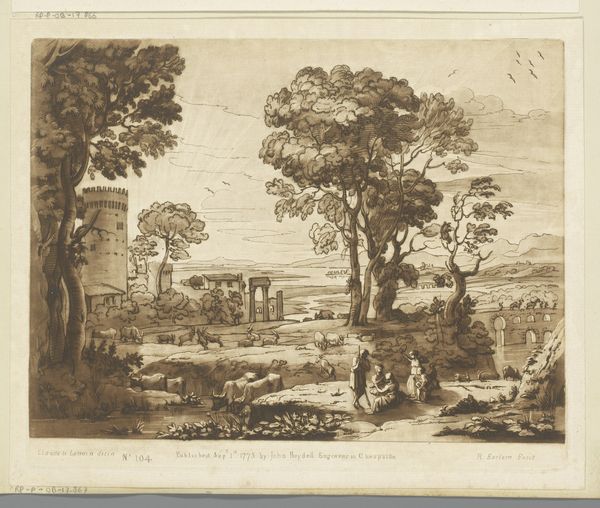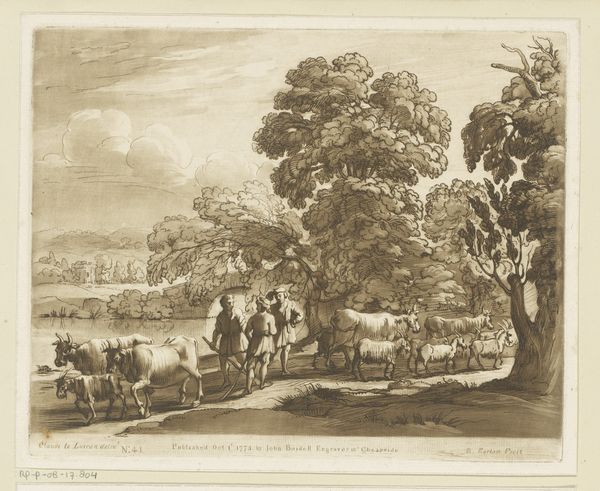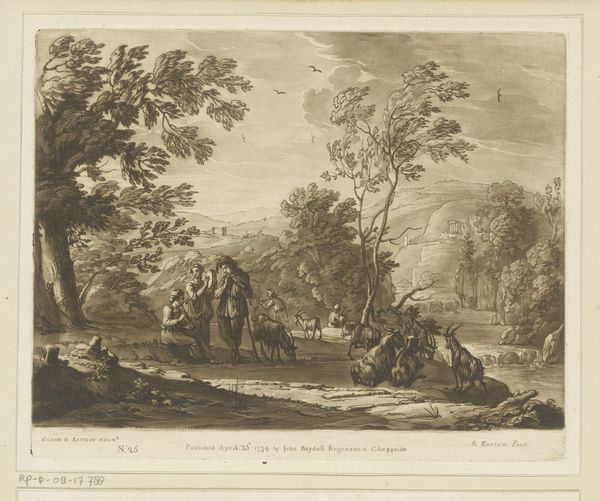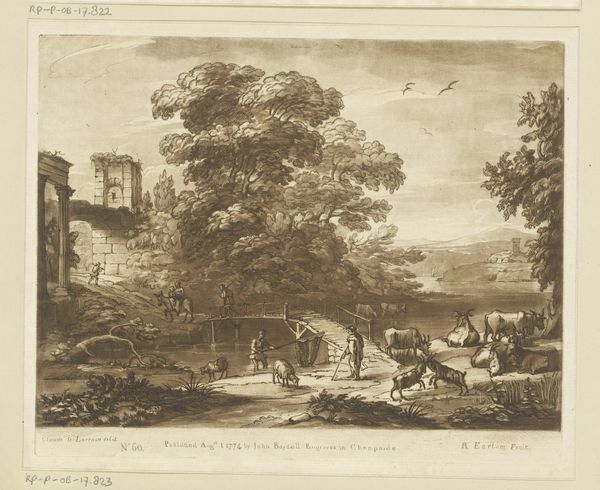
Landschap met musicerende herders en bokken die van een klif vallen Possibly 1774 - 1778
0:00
0:00
richardearlom
Rijksmuseum
Dimensions: height 206 mm, width 259 mm
Copyright: Rijks Museum: Open Domain
Curator: Good morning. We’re looking today at "Landscape with Music-Making Shepherds and Goats Falling from a Cliff", an etching and engraving by Richard Earlom, likely created between 1774 and 1778. It’s part of the Rijksmuseum collection. Editor: It’s…busy. A very pastoral scene overall, almost idyllic at first glance, but there's an underlying sense of impending chaos with those goats! A really unsettling contrast that challenges typical landscape aesthetics. Curator: Indeed. Formally, Earlom organizes the composition in distinct horizontal bands. Note how the darker foreground, filled with foliage and animals, gradually lightens as it recedes to the distant town, creating a clear sense of depth. He also employs a limited color palette that lends a sense of unification. Editor: But what's so intriguing to me is this tension between order and disorder. We see shepherds playing music, representing a harmonious society, but directly next to them, goats are tumbling off a cliff. This reflects a societal tension that speaks to class disparities during the late 18th century when it was produced: a vision of pastoral life that excluded the reality of brutal economic disparities that often produced societal chaos, with symbolic references in this work like falling goats that indicate how easily idyll can turn into catastrophe. Curator: Your interpretation has merit, and yet one might argue the scene embodies the Baroque sensibility, with its dramatic contrasts and dynamic energy. Observe how the artist’s confident engraving generates complex textural interest—from smooth rock surfaces to ruffled animal hair. Editor: Texturally interesting and technically accomplished, certainly, but also carefully coded! Remember this period saw widespread agricultural changes in Europe, including enclosure laws that disrupted traditional ways of life and forced rural laborers into urban centers. These ‘harmonious’ pastoral scenes were increasingly out of sync with social reality. Perhaps Earlom, even subconsciously, exposes that tension. Curator: Whether Earlom intentionally imbued his landscape with subversive political commentary, or he was driven by formalistic principles is for us to decide, and your approach expands the dialogue around Earlom’s choices. Editor: Absolutely. The artist's decisions, and what meanings we, as viewers, choose to invest in them. This landscape challenges us to reflect critically on the narratives embedded in images.
Comments
No comments
Be the first to comment and join the conversation on the ultimate creative platform.
